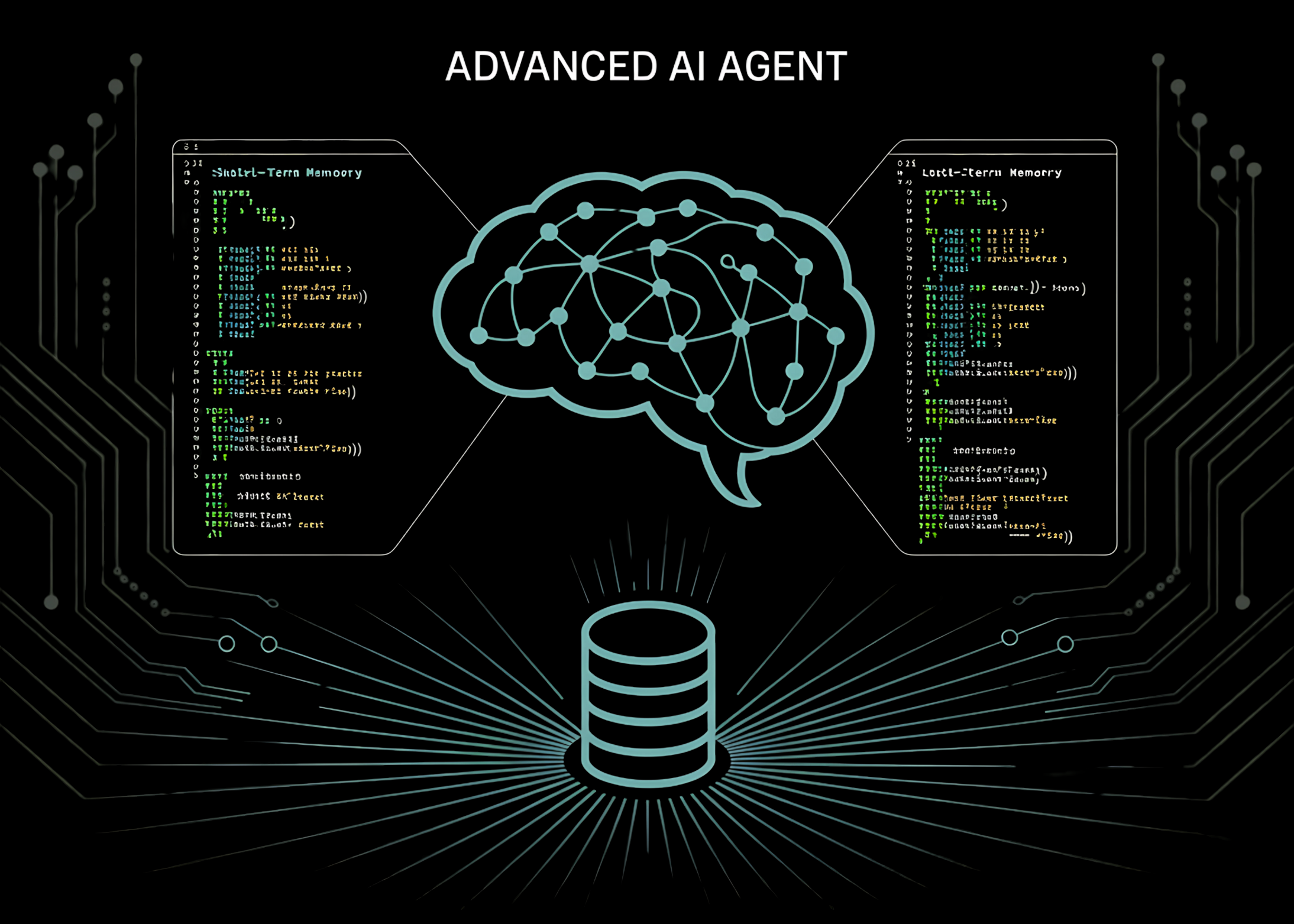Blog
How to Build an Advanced AI Agent with Summarized Short-Term and Vector-Based Long-Term Memory

Introduction to Advanced AI Agents
Artificial Intelligence (AI) is rapidly evolving, enabling the creation of sophisticated agents capable of mimicking human-like reasoning and decision-making. One of the promising areas in AI research is the development of agents that can effectively manage both short-term and long-term memory. This article will walk you through the essential concepts and methodologies to build an advanced AI agent equipped with summarized short-term memory and vector-based long-term memory.
Understanding Memory Types in AI
Short-Term Memory
Short-term memory in AI refers to the agent’s ability to retain information temporarily. This kind of memory is crucial for tasks requiring immediate decision-making and quick responses. For example, an AI assisting in customer service needs to recall the context of a current conversation to provide relevant answers effectively.
Key Functions of Short-Term Memory:
- Context Retention: Remembering ongoing discussions or tasks.
- Rapid Access: Allowing quick retrieval of relevant information.
- Dynamic Updates: Adapting to new insights or changes in the conversation context.
Long-Term Memory
In contrast, long-term memory involves the retention of information over extended periods. This type of memory allows AI agents to store valuable insights, experiences, and knowledge that can inform future decisions. An efficient long-term memory system uses vector-based representations to summarize data, making it easier to store, retrieve, and analyze.
Benefits of Vector-Based Long-Term Memory:
- Compact Representation: Instead of saving every detail, data is compressed into vectors, preserving essential information.
- Similarity Searches: Allowing the agent to find related information quickly, enhancing context-aware responses.
- Scalability: Facilitating the storage and retrieval of large datasets without sacrificing efficiency.
Framework for Building an AI Agent
Step 1: Define Use Cases
Before delving into technical implementations, it’s crucial to identify the specific scenarios where your AI agent will be used. Examples of use cases might include customer support, personal virtual assistants, or data analysis tools. Defining these use cases will guide the design and functionality of your AI agent.
Step 2: Choose the Right Tools and Technologies
Selecting appropriate technologies is essential for building a robust AI agent. Some recommended technologies include:
- Programming Languages: Python is widely used due to its extensive libraries for AI and machine learning.
- Frameworks: TensorFlow and PyTorch provide tools for developing neural networks that can facilitate memory management.
- Database Solutions: Use NoSQL databases like MongoDB for storing vector-based representations efficiently.
Step 3: Develop Short-Term Memory Functionality
Building the short-term memory involves designing data structures that can dynamically store and retrieve information based on user interactions. Consider implementing the following:
- Contextual Caching: Create a mechanism to cache ongoing conversations or tasks, enabling rapid access to context.
- Data Structures: Use stacks or queues to manage recent interactions effectively.
- Update Mechanism: Incorporate rules to regularly update or expire outdated information.
Step 4: Implement Long-Term Memory with Vectors
For long-term memory, focus on creating a system that can convert information into vector representations. Here’s how to implement it:
4.1 Data Representation
- Embeddings: Utilize embeddings like Word2Vec or GloVe for converting text information into numeric vectors.
- Dimensionality Reduction: Apply techniques like PCA or t-SNE for simplifying complex data while retaining critical features.
4.2 Memory Storage
- Storage Structure: Store vectors in a database along with metadata to facilitate quicker searches.
- Similarity Indexing: Implement algorithms like FAISS or Annoy to enable efficient similarity searches across large datasets.
Step 5: Integrate Short-Term and Long-Term Memory
To create a cohesive agent, ensure that your short-term and long-term memory systems work in tandem. The integration process should involve:
- Contextual Retrieval: Use short-term memory data to filter long-term memory searches, enhancing response relevance.
- Feedback Loop: Design a system where interactions recorded in short-term memory update long-term memory when necessary. For example, if a user frequently asks about a specific topic, this information should be stored long-term for future interactions.
Testing and Evaluation
Performance Metrics
Once the AI agent is built, it’s essential to evaluate its performance. Key metrics to consider include:
- Response Accuracy: Measure how often the AI provides correct information based on user queries.
- Memory Utilization: Assess how effectively the agent uses both short-term and long-term memory during interactions.
- User Satisfaction: Gather user feedback to understand the overall experience and identify areas of improvement.
Iterative Improvements
AI development is an ongoing process. Utilize the insights gained during testing to refine your agent continually. Structural changes can include optimizing algorithms, enhancing memory management strategies, or incorporating new data sources.
Conclusion
Building an advanced AI agent that utilizes both summarized short-term and vector-based long-term memory is a challenging yet rewarding endeavor. By following a structured approach—from defining use cases to evaluating performance—you can create an intelligent system capable of handling complex interactions while retaining important knowledge over time.
Implementing such an agent paves the way for more human-like AI systems that can learn, adapt, and provide valuable insights across various applications. As AI continues to evolve, so too should our methods and approaches to developing these intelligent agents.

